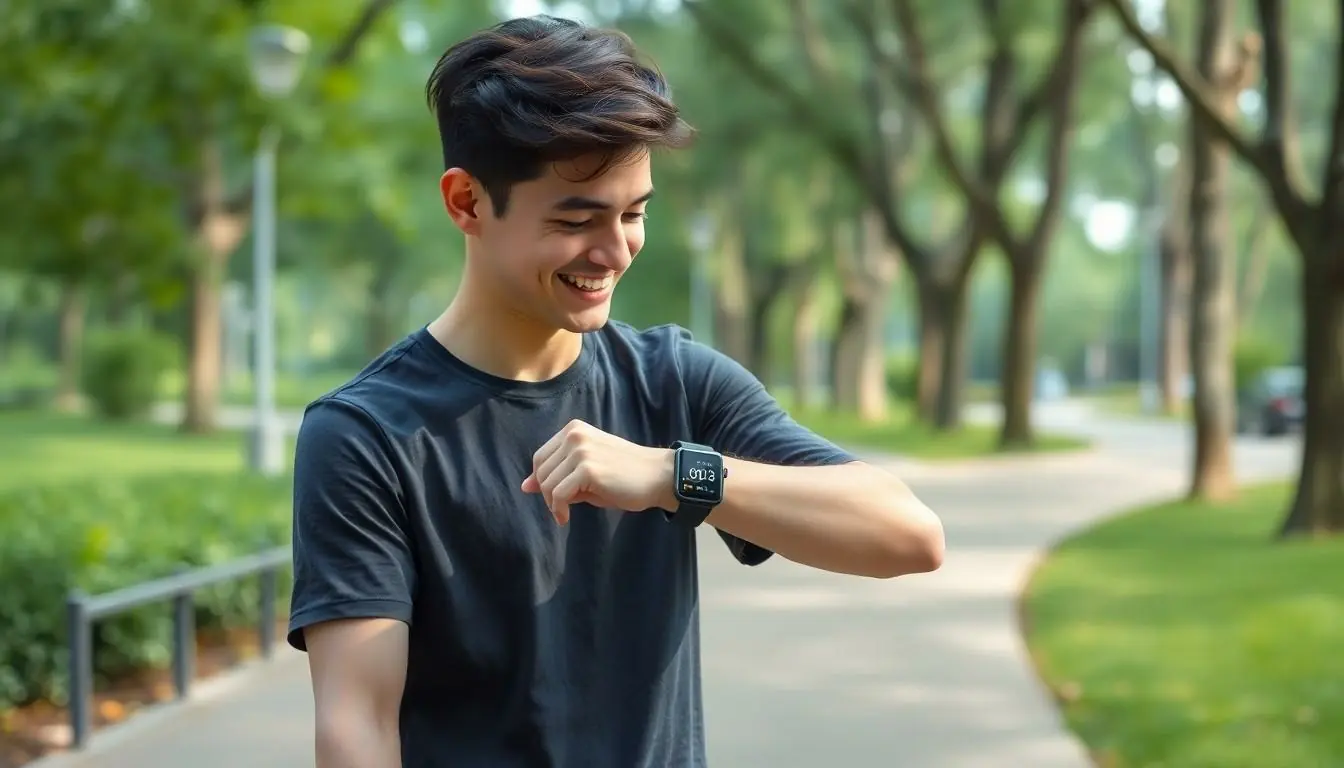Table of Contents
ToggleImagine a world where your fitness tracker doesn’t just count steps but also reminds you to breathe like a zen master. Welcome to the realm of wearable apps, where technology meets your wrist in a delightful dance of convenience and style. These apps are the secret sauce behind smartwatches, fitness bands, and even those quirky glasses that promise to make you look cooler than you actually are.
Wearable apps aren’t just about tracking your heart rate or monitoring your sleep. They’re about enhancing daily life, making tasks easier, and sometimes even providing a good laugh when they misinterpret your latest yoga pose. As they evolve, these apps are changing the way people interact with technology, making it more personal and, let’s face it, a lot more fun. Buckle up as we dive into the fascinating world of wearable apps and discover what makes them the must-have accessory of the modern age.
What Is Wearable App?
Wearable apps integrate technology into everyday items. They improve user interaction by offering convenience, health tracking, and entertainment.
Definition of Wearable Apps
Wearable apps refer to software applications specifically designed for devices worn on the body. These include smartwatches, fitness trackers, and health-monitoring gadgets. Such apps focus on enhancing users’ lifestyles through real-time data tracking and notifications. By monitoring health metrics like heart rate and steps taken, they provide valuable insights. Users benefit from easily accessible information on their health and fitness directly from their wrist or other wearable devices.
Types of Wearable Apps
Wearable apps can be categorized into several key types. Fitness apps track physical activities like walking, running, or cycling. Health monitoring apps focus on metrics such as sleep patterns or heart rates. Lifestyle apps provide notifications for calls, messages, or reminders, enhancing daily convenience. Navigation apps assist users in accessing directions while on the move. Lastly, entertainment apps allow for music streaming or podcast listening, enriching the overall user experience. Each type plays a distinct role in personalizing technology use.
Features of Wearable Apps

Wearable apps showcase several key features that enhance user experiences and interactions with technology. These features focus on usability and connectivity.
User Interface and Experience
User interfaces of wearable apps prioritize simplicity. Intuitive designs streamline navigation, allowing quick access to essential functions. Visual elements often adapt to smaller screens, providing clear readability. Feedback mechanisms, such as haptic responses, enhance interactions. Personalization options increase engagement, letting users tailor settings to their preferences. Frequent updates maintain user interest and keep application functionalities current.
Connectivity and Functionality
Functionality in wearable apps relies heavily on connectivity. Many apps connect with smartphones, allowing seamless data synchronization. Bluetooth technology often links devices, ensuring real-time updates. Compatibility extends to various platforms, enabling broader access across user devices. Data sharing with health services promotes comprehensive health management. Notifications provide timely alerts directly on users’ devices, enhancing overall usability and engagement.
Popular Wearable Apps on the Market
Wearable apps enhance user experiences across various devices. These applications cater to different aspects of life, making them increasingly popular in today’s tech landscape.
Fitness and Health Tracking Apps
Fitness and health tracking apps play a vital role in monitoring users’ physical well-being. Examples include MyFitnessPal, which tracks calorie intake, and Strava, which analyzes workout performance. Each app provides real-time feedback on metrics such as steps taken, heart rate, and sleep quality. Users benefit from personal insights that motivate them to achieve fitness goals. Additionally, these apps often integrate with various devices for seamless data sharing. As a result, health-conscious individuals find these tools beneficial for maintaining active lifestyles.
Smartwatch Companion Apps
Smartwatch companion apps enhance functionality by providing extended features for smartwatch users. Apps like Spotify allow users to control music playback directly from their wrists. Notifications from apps such as WhatsApp ensure users stay connected without checking smartphones constantly. These companion apps also enrich everyday tasks, including navigation with Google Maps. Many users appreciate that these features simplify daily routines and improve overall convenience. Ultimately, smartwatch companion apps transform wrists into multifunctional tools facilitating quick access to essential information.
Future of Wearable Apps
The future of wearable apps looks promising, driven by technological advancements and evolving user needs.
Innovations in Technology
Emerging technologies continually shape wearable apps, enhancing their functionality and appeal. Artificial intelligence, for example, personalizes user experiences by analyzing health data and offering tailored recommendations. Integration with augmented reality offers exciting opportunities, enabling interactive features that enhance user engagement. Additionally, advancements in battery life increase device longevity, allowing longer usage periods without frequent charging. Improved sensors provide more accurate health metrics, further boosting user trust and reliability. Wearable app developers are also focusing on seamless connectivity with other smart devices, optimizing the overall experience through real-time notifications and synchronized data sharing.
Trends to Watch
Certain trends are expected to define the wearable app landscape in the coming years. Health and wellness applications will gain further traction as users prioritize holistic well-being. Increased demand for mental health monitoring will push developers to create apps addressing stress management and mindfulness. Sustainability will be a focus, with eco-friendly devices appealing to environmentally conscious consumers. Adoption of 5G technology promises faster data transmission and improved functionality for real-time applications. Finally, gamification features will trend upward, making wellness activities more engaging through competition and rewards, ultimately fostering user motivation and retention.
Wearable apps are revolutionizing how individuals interact with technology and manage their daily lives. By seamlessly integrating into devices like smartwatches and fitness trackers, these apps provide not just health monitoring but also enhance convenience and entertainment. As technology continues to advance, the potential of wearable apps grows, promising even more personalized experiences.
With the integration of features like real-time data tracking and intuitive interfaces, users can easily access vital information at their fingertips. The future looks bright for wearable apps as they evolve to meet the changing needs of users, making everyday tasks simpler and more engaging.





